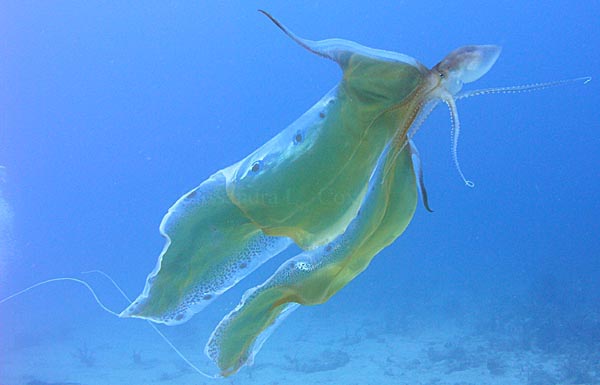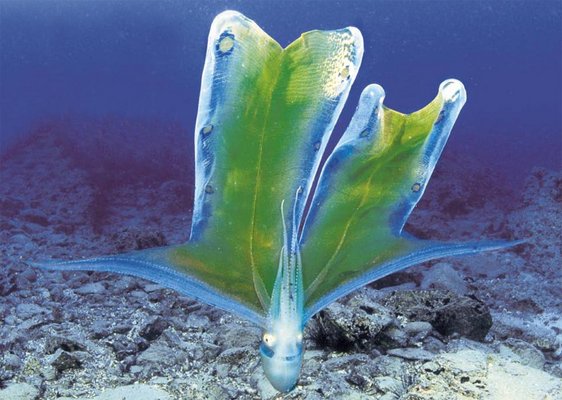

Figure. Ventral view of a large (ca. 1.5 m) T. violaceus photographed in about 15 m of water off Fort Lauderdale, Florida, USA. Note the large filaments (arrow) that extend from the ends of the webs. These are actually the slender arms I (see last photograph in this series) that appear as slender median lines down each large web. Note that the "filaments" appear to be of different lengths. Photograph by Cassandra LeMasurier.


Figure. Lateral view of the same octopod. Note the proximity to the ocean floor. Photograph by Cassandra LeMasurier.


Figure. Ventral view of the same octopod. Photograph by Photograph by Cassandra LeMasurier.



Figure. Left - Enlarged view of the head, body and arms bases from photograph no. 2 above to identify the arms. Right - Enlarged view of the web tips from photograph no. 3 above to show the continuation of the arm I into the "filament". This shows clearly in the right-hand region of the photograph. Photographs by Cassandra LeMasurier, modified.


Figure. Ventral view of T. violaceus. Photograph taken by Artur Silva while diving off Porto Santo Island, Madeira, North Atlantic. Note the blunt tips of the dorsal arm webs, the short length of the webs and the lack of the slender arm extension beyond the web (compare to the three top photographs). Presumably, the ends of these arms and webs were autotomized (shed) in response to the attack of a predator. Photograph originally published on the BBC Wildlife Magazine, April 2007.




 Go to quick links
Go to quick search
Go to navigation for this section of the ToL site
Go to detailed links for the ToL site
Go to quick links
Go to quick search
Go to navigation for this section of the ToL site
Go to detailed links for the ToL site